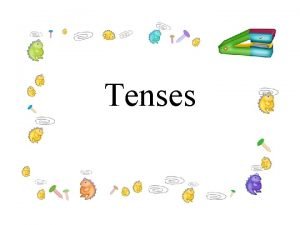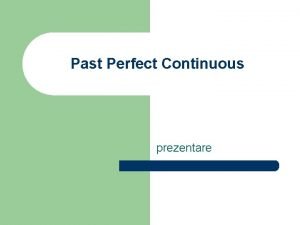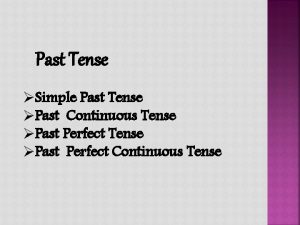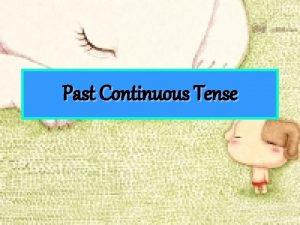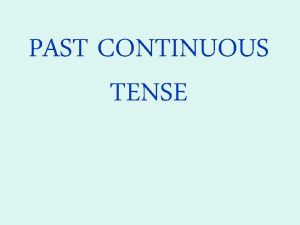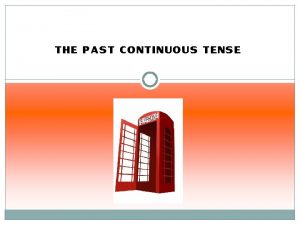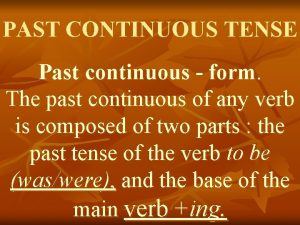PAST TENSE AND PAST CONTINUOUS TENSE PAST TENSE








- Slides: 8

PAST TENSE AND PAST CONTINUOUS TENSE

PAST TENSE The simple past is used to talk about a completed action in a time before now. Duration is not important. Examples John Cabot sailed to America in 1498. My father died last year. He lived in Fiji in 1976. We crossed the Channel yesterday.

You always use the simple past when you say when something happened, so it is associated with certain past time expressions: • Frequency: often, sometimes, always I sometimes walked home at lunchtime. I often brought my lunch to school. • A definite point in time: last week, when I was a child, yesterday, six weeks ago We saw a good film last week. Yesterday, I arrived in Geneva. She finished her work at seven o'clock I went to theatre last night • An indefinite point in time: the other day, ages ago, a long time ago People lived in caves a long time ago. She played the piano when she was a child

Questions and Negatives I. Questions We use did to make questions with the past tense: 1. 2. 3. 4. When did you meet your wife? Where did you go for your holidays? Did she play tennis when she was younger? Did you live abroad? But look at these questions: 1. Who discovered penicillin? 2. Who wrote Don Quixote? II. NEGATIVES We use didn’t (did not) to make negatives with the past tense: 1. They didn’t go to Spain this year. 2. We didn’t get home until very late last night. 3. I didn’t see you yesterday.

Past Continuous Tense The most common use of the past continuous tense is to talk about something that was happening around a particular time in the past. 1. What were you doing at 8 o’clock last night? I was watching television. 2. In 1994 he was working in a small town in Poland. 3. At 6 o’clock on Saturday morning we were travelling to the airport.

PAST TENSE AND PAST CONTINUOUS TENSE v We often use the past continuous and the past simple tense together. When this happens, the past continuous describes a longer, ‘background’ action or situation and the past simple describes the action or events. 1. When I woke up this morning it was raining and my father was singing in the kitchen. 2. I was walking home, whistling happily, when I saw two masked men run out of the bank. v Often, the ‘action’ described by the past simple tense interrupts the ‘situation’ described by the past continuous tense. 1. I broke my leg when I was skiing. 2. I was playing a computer game when the doorbell rang.

EXERCISES 1. Write down sentences using the words below. Use past tense. Operate, implement, calculate, connect, break 2. Make questions in the form of past continuous tense with the word below. Use WH-Questions. Type, write, delete, erase, crop

Write sentences with the verbs below in the past simple and the past continuous. . (drive), (have), (do) (hide), (come in) (plan), (phone) (clean), (break) (look), (see) Write down the WH-Question of the sentences of past tense below. 1. She operated the program well yesterday 2. The students always came to class on time when they was senior high school. 3. The programmer could install the software easily.






